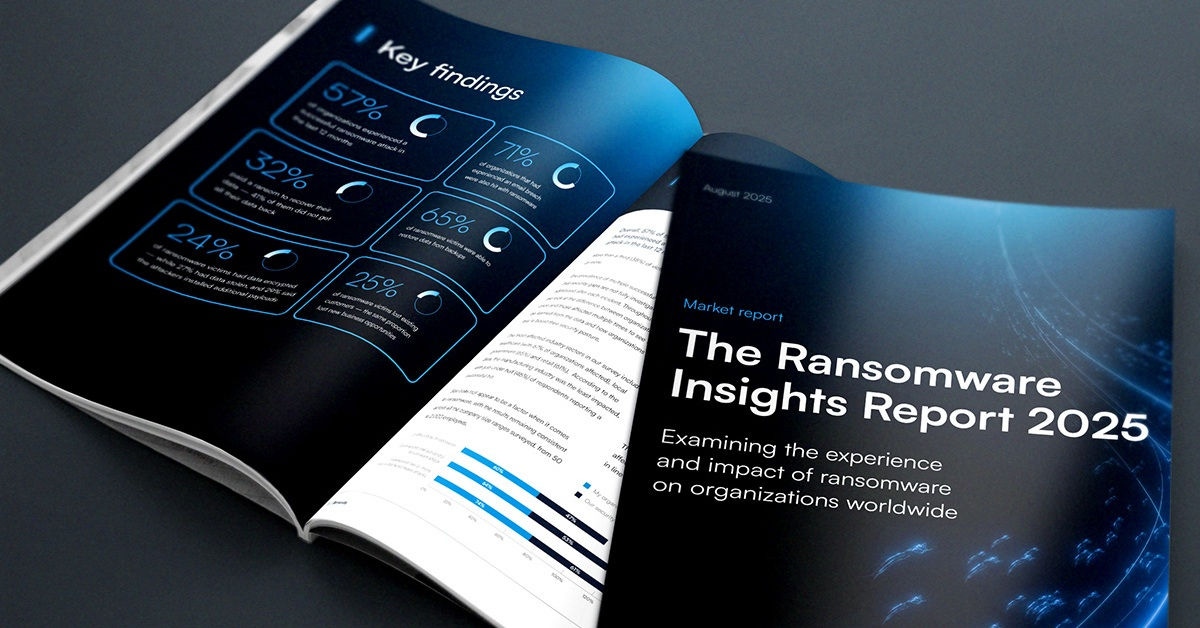
La encuesta revela los desafíos de ciberseguridad de 2025
Una encuesta global de 476 profesionales de TI y ciberseguridad revela que poco más de la mitad (52%) de los encuestados informan que su organización debería gastar más en ciberseguridad, siendo el software y la capacitación en concienciación sobre seguridad las principales prioridades con un 27% cada una.
Realizada por Pollfish en nombre de OTRS AG, un proveedor de una plataforma para gestionar solicitudes de mesa de ayuda, la encuesta también encuentra que las inversiones adicionales en infraestructura (26%) y personal (21%) están muy cerca.
La encuesta sugiere que todavía hay mucho margen para mejorar la integración, con solo el 28% muy satisfecho en comparación con el 50% que están ligeramente satisfechos. Otro 11% están insatisfechos o neutrales. La complejidad de las herramientas (46%), las dificultades de integración (45%) y los requisitos de formación (37%) son las tres principales fuentes de frustración, según la encuesta.
Sin embargo, el número de herramientas y plataformas que se están empleando parece haber aumentado en el último año, con un 63% que ahora utiliza plataformas de gestión de eventos de información de seguridad (SIEM), un 58% emplea herramientas de orquestación, automatización y respuesta de seguridad (SOAR) y un 68% utiliza herramientas de gestión de vulnerabilidades.
Al comienzo del nuevo año, muchos equipos de ciberseguridad están debatiendo los méritos de adoptar plataformas más integradas que prometen reducir el costo total de la ciberseguridad, por ejemplo, simplificando la integración frente a seguir invirtiendo en las mejores herramientas y plataformas especializadas. El enfoque posterior permite a los equipos de ciberseguridad adoptar herramientas como mejor les parezca, pero cada vez que estas herramientas necesitan integrarse, depende del equipo de ciberseguridad crearlas y mantenerlas. Además, el nivel de integración que se pueda lograr varía ampliamente, por lo que muchos equipos de ciberseguridad aún se encontrarán alternando entre consolas mientras responden a varias amenazas.
Cada equipo de ciberseguridad tendrá que decidir por sí mismo qué enfoque tiene más sentido para ellos. En muchos casos, ya se han realizado inversiones en herramientas y volver a capacitar a los equipos de ciberseguridad requeriría un esfuerzo significativo. Desmantelar y reemplazar todas esas herramientas en favor de una plataforma integrada puede no ser económicamente viable.
Al mismo tiempo, cualquier organización que espere aprovechar la inteligencia artificial (IA) para automatizar la ciberseguridad necesitará agregar inteligencia sobre amenazas. Afortunadamente, el costo total de recopilar e integrar datos está disminuyendo a medida que las organizaciones adoptan más interfaces estándar.
Independientemente del enfoque, una integración más estrecha entre herramientas y plataformas será crucial el próximo año, ya que las amenazas de ciberseguridad continúan aumentando en volumen y sofisticación. Los equipos de ciberseguridad están, como resultado, bajo más presión que nunca para mitigar amenazas más rápido que nunca. Después de todo, el tiempo más que nunca es dinero cuando los ciberdelincuentes pueden, por ejemplo, exfiltrar grandes cantidades de datos en minutos. Con suerte, la próxima ola de inversiones en herramientas de IA generativa hará que sea más fácil analizar todos los datos, pero antes de que alguien pueda lograr ese objetivo, la necesidad de primero recopilar los datos correctos en el momento adecuado y luego hacerlos disponibles en el lugar correcto va a ser, en última instancia, la capacidad más importante que los equipos de ciberseguridad necesitarán tener en 2025.

Informe de Barracuda sobre Ransomware 2025
Principales conclusiones sobre la experiencia y el impacto del ransomware en las organizaciones de todo el mundo
Suscríbase al blog de Barracuda.
Regístrese para recibir Threat Spotlight, comentarios de la industria y más.

Seguridad de vulnerabilidades gestionada: corrección más rápida, menos riesgos, cumplimiento normativo más fácil
Descubra lo fácil que es encontrar las vulnerabilidades que los ciberdelincuentes quieren explotar.





